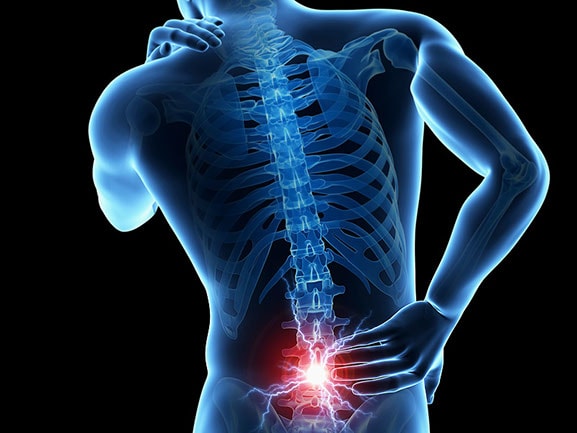
Spinal infections can be classified by the anatomical location involved: the vertebral column, intervertebral disc space, the spinal canal and adjacent soft tissues. Infection may be caused by bacteria or fungal organisms and can occur after surgery. Like infections in other parts of the body, it can also affect the spine.

The most common cause of spinal infection in our country is tuberculosis. The other cause of infection is bacteria which may spread to the spine from a focus of infection in some other part of the body.
Spinal infection can lead to pain over the affected region of the spine, fever, loss of weight and appetite. In the later stages, it can lead to compression on the spinal cord and nerves causing varying degrees of muscle weakness and altered sensations.
Spinal infections are diagnosed by a thorough history and clinical examination of the symptomatic person and confirmed with x-rays and an MRI scan.
Most spinal infections can be treated with antibiotics and treatment is required only in a few instances. The first step is to ascertain the exact bacteria or organism that is causing the infection and this may necessitate a biopsy. Once the organism is identified, the appropriate antibiotic is started. Treatment is considered when
a) there is no response to antibiotics
b) significant weakness in the limbs on presentation or worsening muscle strength while on antibiotic treatment.
c) when the destruction of the vertebrae causes a spinal deformity or instability. treatment may be in the form of a decompression of the neural structures and may be supplemented with screws and rods to stabilize the spine.
Advancing age, altered immune status, diabetes, intravenous drug abuse and a source of infection outside the spine are risk factors for the development of spinal infection.
***We Promise, no spam!
Andhra Pradesh Most Advanced Neuro Treatment
Services,At Sri Padmavathi Multi-Specialty Hospital
providing the latestand most advanced treatment
modalities.
© 2021, Sri Padmavathi Hospital. All Rights Reserved.